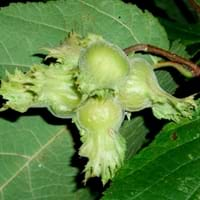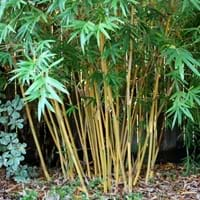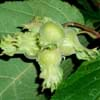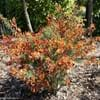Life Span
Perennial
Perennial
Origin
North America, Northeastern United States, Mid-Atlantic United States, Southeastern United States, Canada
China
Types
Not Available
Not Available
Habitat
Mediterranean region
Dry Forest, hedge rows, open Woodlands, Shady Edge
USDA Hardiness Zone
3-9
8-15
Sunset Zone
2b, 3a, 3b, 4, 5, 6, 7, 8, 9, 14, 15, 17, 18, 19, 20
Not Available
Habit
Thicket/Colonizing
Clump-Forming
Minimum Width
Not Available
Flower Color
Yellow, Red
Not Available
Flower Color Modifier
Not Available
Bicolor
Fruit Color
Not Available
Not Available
Leaf Color in Spring
Green, Light Green
Light Green, Dark Green
Leaf Color in Summer
Green, Dark Green
Light Green
Leaf Color in Fall
Red, Dark Red, Copper
Light Green, Dark Green
Leaf Color in Winter
Not Available
Light Green, Dark Green
Leaf Shape
Heart-shaped
digitate
Plant Season
Spring, Summer, Fall
Spring, Summer, Fall, Winter
Sunlight
Full Sun, Partial Sun, Partial shade
Full Sun, Partial Sun, Partial shade
Type of Soil
Loam
Loam, Sand
The pH of Soil
Neutral, Alkaline
Acidic, Neutral, Alkaline
Soil Drainage
Average
Average
Bloom Time
Early Spring
Not Available
Tolerances
Drought
Drought
Where to Plant?
Ground, Pot
Container, Ground
How to Plant?
Seedlings, Transplanting
Budding, From Rhizomes, Seedlings
Plant Maintenance
Medium
Medium
Watering Requirements
Average Water Needs, Do Not over Water
Average Water Needs
In Summer
Lots of watering
Lots of watering
In Spring
Moderate
Moderate
In Winter
Average Water
Average Water
Soil pH
Neutral, Alkaline
Acidic, Neutral, Alkaline
Soil Type
Loam
Loam, Sand
Soil Drainage Capacity
Average
Average
Sun Exposure
Full Sun, Partial Sun, Partial shade
Full Sun, Partial Sun, Partial shade
Pruning
Remove damaged leaves, Remove dead branches, Remove dead leaves
No need to prune
Fertilizers
All-Purpose Liquid Fertilizer
All-Purpose Liquid Fertilizer
Pests and Diseases
Red blotch
Red blotch
Plant Tolerance
Drought
Cold climate, Drought, Heat Tolerance, Wet Site
Flower Petal Number
Not Available
Single
Foliage Texture
Medium
Medium
Foliage Sheen
Matte
Matte
Attracts
Birds
Butterflies
Allergy
Hay fever, Oral Allergy
Not Available
Aesthetic Uses
Beautification, Showy Purposes
Showy Purposes
Beauty Benefits
Anti-ageing, Glowing Skin, Good for skin and hair, Skin cleanser
No Beauty Benefits
Environmental Uses
Air purification
Air purification, Food for insects, Wildlife
Medicinal Uses
Astringent, Febrifuge
Not Available
Part of Plant Used
Bark, Leaves, Twigs
Stem, Tree trunks
Other Uses
Used as Ornamental plant, Used for its medicinal properties
Economic Purpose, Traditional medicine, Used As Food, Used for woodware, Used in Furniture, Used in paper industry
Used As Indoor Plant
Yes
No
Used As Outdoor Plant
Yes
Yes
Garden Design
Edible, Feature Plant, Foundation, Fruit, Fruit Tree, Mixed Border, Screening, Wind Break
Container, Feature Plant, Hedges, Screening / Wind Break, Tropical
Botanical Name
CORYLUS americana
BAMBUSA multiplex
Common Name
American Hazelnut
Clumping Bamboo, Hedge Bamboo
In Hindi
अमेरिकी हेज़लनट
हेगड़े बांस
In German
amerikanische Haselnuss
Hedge Bambus
In French
américaine noisettes
Bamboo Hedge
In Spanish
Americana avellana
bambú de cobertura
In Greek
American Hazelnut
hedge Μπαμπού
In Portuguese
americana avelã
Bamboo Hedge
In Polish
Amerykański orzech laskowy
Żywopłoty Bamboo
In Latin
American Hazelnut
Sepi Bamboo
Phylum
Magnoliophyta
Magnoliophyta
Class
Magnoliopsida
Liliopsida
Family
Betulaceae
Poaceae
Clade
Angiosperms, Eudicots, Rosids
Angiosperms, Commelinids, Monocots
Subfamily
Coryloideae
Bambusoideae
Number of Species
Not Available
Not Available
Importance of American Hazelnut and Hedge Bamboo
Want to have the most appropriate plant for your garden? You might want to know the importance of American Hazelnut and Hedge Bamboo. Basically, these two plants vary in many aspects. Compare American Hazelnut and Hedge Bamboo as they differ in many characteristics such as their life, care, benefits, facts, etc. Every gardener must at least have the slightest clue about the plants he wants to plant in his garden. Compare their benefits, which differ in many ways like facts and uses. The medicinal use of American Hazelnut is Astringent and Febrifuge whereas of Hedge Bamboo is Not Available. American Hazelnut has beauty benefits as follows: Anti-ageing, Glowing Skin, Good for skin and hair and Skin cleanser while Hedge Bamboo has beauty benefits as follows: Anti-ageing, Glowing Skin, Good for skin and hair and Skin cleanser.
Compare Facts of American Hazelnut vs Hedge Bamboo
How to choose the best garden plant for your garden depending upon its facts? Here garden plant comparison will help you to solve this query. Compare the facts of American Hazelnut vs Hedge Bamboo and know which one to choose. As garden plants have benefits and other uses, allergy is also a major drawback of plants for some people. Allergic reactions of American Hazelnut are Hay fever and Oral Allergy whereas of Hedge Bamboo have Not Available respectively. Having a fruit bearing plant in your garden can be a plus point of your garden. American Hazelnut has showy fruits and Hedge Bamboo has no showy fruits. Also American Hazelnut is not flowering and Hedge Bamboo is not flowering . You can compare American Hazelnut and Hedge Bamboo facts and facts of other plants too.





